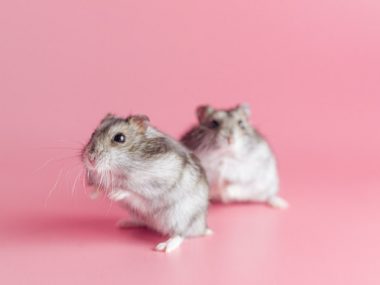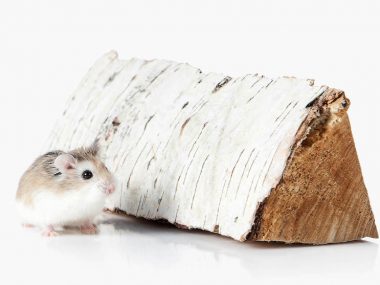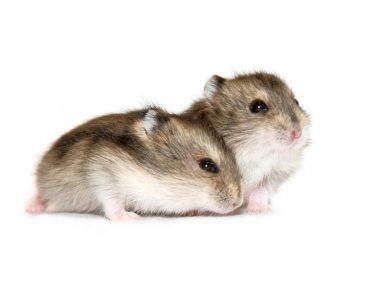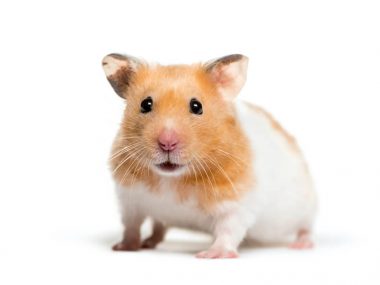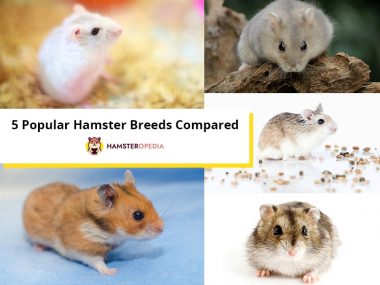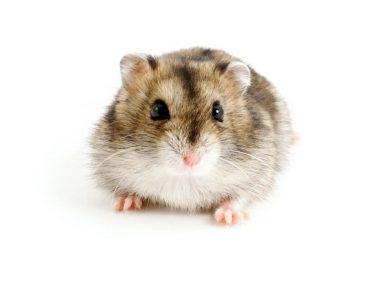Those cute little hamsters melt the heart when gazing through a pet store window at you. But before you succumb to a moment of weakness, you’ll want to find out what goes into Teddy Bear hamster care.
Table of Contents
What Is A Teddy Bear Hamster?
“Teddy bear” is a term used to describe a Syrian hamster (Mesocricetus auratus) with long hair. “Syrian,” “Teddy Bear,” and “Golden” are all interchangeably used to describe this type of hamster breed.
To better understand where Syrian (Teddy Bear) hamsters fit in with domestic/pet hamster species, let’s identify the common pet hamster species. Domestic/pet hamsters will either be Syrian (also known as Golden or Teddy Bear,) Dwarf (Winter White, Campbell Russian, or Robovoski,) or Chinese.
Syrian Hamster
Syrians are also known as Golden or Teddy Bear and are the largest hamster species. It’s the long hair that sets them apart as Teddy Bear hamsters. Syrian hamsters are the most common pet hamster. When it comes to the distinctive long-hair, teddy bear look, you’ll only find that in Syrian hamsters.
Dwarf Hamsters
- Winter White
- Campbell Russian
- Roborovski
These hamsters are the smallest among domestic hamsters. Unlike what many may think, there is no dwarf teddy bear hamster.
Chinese
Chinese hamsters are often mistaken as dwarfs because of their small size. You may find that many refer to this hamster as a “Chinese Dwarf” even though they are not classified as a dwarf.
Where Did The Syrian Hamster Come From?
Syrian hamsters are native to Syria (hence its name) and parts of the Middle East. According to the Journal of Zoology (Notes on the current distribution and the ecology of wild golden hamsters (Mesocricetus auratus,) the “main distribution area” of wild Syrian hamsters is in Syria’s Aleppo plateau.
Although the exact origin of these hamsters has yet to be determined, Michael R. Murphy (author of History of the Capture and Domestication of the Syrian Golden Hamster (Mesocricetus auratus Waterhouse) states in his book that the earliest mention of Syrian hamsters description is recorded in “The Natural History of Aleppo” (by Dr. Alexander Russell.) Russell studied Syrian hamsters back in the late 1700s. George Robert Waterhouse named and presented this hamster to the London Zoological Society as a new species.
The Manual of Exotic Pet Practice published a research article (Hamsters and Gerbils) which clearly mentions that the Golden (Syrian) hamster was originally classified in 1839. Furthermore, the article states that the lineage of all captive domesticated hamsters originated from a wild female and her 12 pups captured in Syria back in 1930.
The Laboratory Animal Medicine Third Edition published an article (Biology and Diseases of Hamsters) that notes Syrian hamsters currently residing in the wild of the Middle East are found in arid desert regions where they tunnel deep to stay cool. In the wild, these hamsters come out during the day, whereas pet hamsters are nocturnal.
Teddy Bear Hamster Characteristics and Traits
Syrian hamsters are undeniably cute on the outside. But do they make good pets? Yes, Teddy Bear hamsters have a playful, amicable demeanor and a ton of otherwise wonderful attributes!
Teddy Bear Hamster At A Glance
- Coat: long, straight, or wavy/curly
- Colors: yellow, rust, orange, black, white, cream, gray/silver
- Patterns: roan, banded, dominant spot, tortoiseshell
- Self or Agouti: can be either
- Eyes: black, black-red, black-blue, ruby, pink, heterochromatic
- Size: 6-8”, 4-5 oz.
- Lifespan: 18 months to 3 years
- Diet: omnivore
- Sexual maturation: 30 days
- Temperament: docile/sweet if handled as pups
- Level of care: moderate (not intended as a starter pet)
Coat Characteristics

Syrian hamsters will either have a short, long, or rex coat (fur.) Long-haired are known as Teddy Bears, while short-hair are known as Goldens or Fancy Bears. Sometimes you may come across a Syrian that have wavy or curly hair, and in this case, they are known as a Rex.
There’s no mistaking a Teddy Bear hamster because its hair may look a bit unruly and in need of a good combing.
Syrians coat (fur) will either be shiny, which is known as satin, or have a dull, matte look which is known as non-satin. Their coat patterns are diverse and can range from no pattern to a hamster with a calico/tortoiseshell look. The differences are stunning. Such patterns include roan, banded, dominant spot, or tortoiseshell.
- Roan
- Predominantly cream or white
- Head may be heavily colored or have no color
- Head coloring tapers off, becoming pale or disappearing towards the tail
- May have red eyes
- Banded
- A white band is present in the middle section of the body
- Dominant Spot
- Predominantly white with random patches or spots of color
- Tortoise Shell
- Distinctive spots of yellow, cinnamon, orange,
- This trait is found in females only
In addition to coat length, sheen, and patterns are colors. Syrians will either be one color (known as self) or have a crescent shape on their cheek and a light belly (known as agouti.)
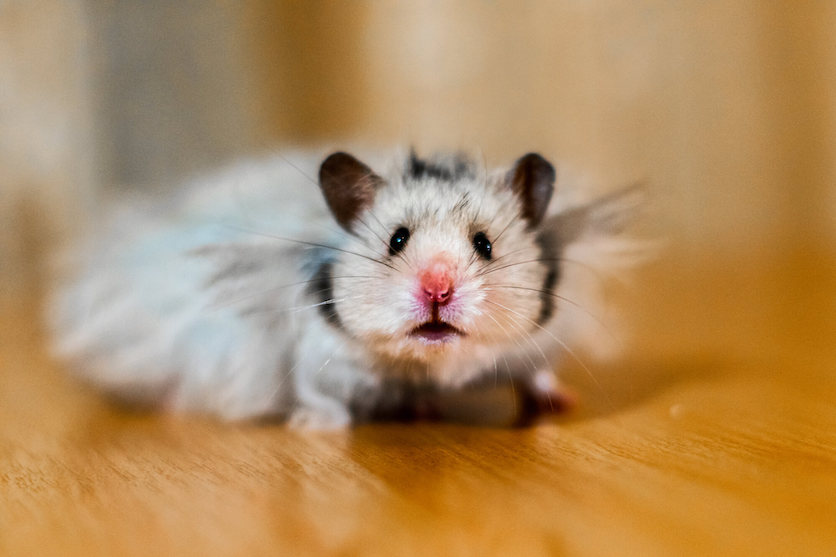
Eyes, Ears, and Tail Characteristics
Syrian hamsters have some interesting eye colors. While most are black, it’s not unusual for them to have blackish blue, blackish-red, dark red, or pink. Although red or pink eyes are considered rare, there is a very rare eye color that consists of two different colored eyes. It’s known as heterochromia — one eye is black, and the other is red.
When it comes to their little ears, they may be pointed or rounded, or dark or light. Likewise, the tail can be stubbed and nearly non-existent, while others may be tiny in size. The tail of Teddy Bear hamsters may be hidden behind their long hair.
Teddy Bear Hamster Lifespan
As much as we’d love to tell you these little guys will be around for a long time, they have short lives. The average lifespan of a Syrian (Teddy Bear) hamster is up to three years. The Department of Animal Science at Cornell University published an article in which the longevity of hamsters was studied.
Testosterone and estrogen played key roles in determining how long males and female hamsters live. It was found that males live an average of 577 days. In comparison, unbred females lived an average of 444 days and bred females even less at 357 days.
Factors aside from hormones that play a role in pet hamster longevity include genetics, species, diet quality, environment, care and nurturing, exercise, and exposure to stress.
Teddy Bear Hamster Size
According to the Merck Veterinary Manual, adult Syrian hamsters can grow to about 6-8 inches (15-20 cm) and weigh 4-5 ounces (110-140 g.) These figures are based on ideal conditions which provide an exercise outlet. Underweight or overweight symptoms in hamsters are typical because of a poor diet, being fed too much or too little, or not having access to some form of exercise or exercising too much.
Are Teddy Bear Hamsters Friendly?
Dr. Horatiu V. Vinerean at the Florida International University published an article on hamsters which includes some insight on handling hamsters. He states that male hamsters are friendlier and easier to handle. However, sleeping hamsters awakened to an approaching hand can likely cause it to bite.
Teddy Bear Hamster Taming
Many reputable and ethical hamster breeders ensure that hamster pups are handled to get them acquainted with being held and interacting with humans. When selecting a hamster from a pet store or a breeder, it’s important to find out if it has been adequately handled.
The potential hamster parent will be required to handle it to tame it until it feels comfortable and develops a bond. Lack of handling (taming) results in an aggressive hamster that will bite. Teddy Bear hamsters are friendly, providing they have undergone proper handling.
Daily interaction with a new hamster is a must. To gain their trust and tame them, cupping your hands to hold them is the best way to handle one. With time, they will allow you to pet them and play with them.
How To Take Care Of A Teddy Bear Hamster
Responsible hamster parents know that this little animal is totally dependent upon them. So before taking a hamster home, it’s important to have their cage set up beforehand. Also, you’ll have to plan ahead for feeding them and otherwise ensuring their wellbeing.
Teddy Bear Hamster Cage
Your hamster will need a cage that provides enough room to explore, burrow, exercise, and enjoy. Accessories will also require extra room within the cage. Hamster cages are not a “one-size-fits-all” and should be sized according to your hamster. Teddy Bear (Syrian) hamsters are large, and because of this, they’ll need a roomy cage.
The Merck Veterinary Manual recommends that a hamster cage be a minimum of 6 inches tall. The taller the cage, the more opportunity of providing your hamster deep bedding to burrow in. Hamsters naturally burrow and delight in having the room and the bedding to do so.
Hamster cages come in many different colors and sizes. Amenities in some of the more extravagant options include multi-levels, tubes, wheels, and houses. There’s a cage for every budget.
Cage Must-Haves
- Nesting box
- Bedding (cedar and pine shavings should never be used)
- Wheel
- Water bottle
- Food bowl
- Toys
Placement Of Cage
Good
- Reasonably quiet, warm room 64-79 degrees (F) (17-26 C)
- Away and protected from children or pets
- Placed on a solid surface such as a sturdy table, counter, or stand
Bad
- In front of a window
- Next to an exterior door
- Near vents, drafts, or fireplace
- On a surface where it can tip over or fall
- Next to a radio or television
Teddy Bear Hamster Food
The quality of your hamster’s diet plays a role in their health and longevity. Hamsters should be fed a diet that mimics what they would naturally eat in the wild.
- A good quality pellet food designed for hamsters.
- Small servings of fresh vegetables and fruits.
- Occasional treats from the pet store/vet.
Do Not Feed:
- Alcohol
- Caffeine (chocolate, tea, coffee, etc.)
- Sugary foods
- Processed foods
- Citrus (oranges, lemons, limes, grapefruit, etc.)
- Nightshade vegetables (potatoes, tomatoes)
- Onions
- Garlic
- Seasonings
What Do Teddy Bear Hamsters Like To Play With?
It goes without saying that hamsters love having a wheel to exercise and burn off excess energy. Other items that provide entertainment and enrichment are tubes, things to chew on, and small toys designed for hamsters.
Tubes satisfy the burrowing behavior in hamsters. In the wild, they burrow and create tunnel systems beneath the ground. Chewing is a natural behavior so providing them with safe means to do what comes naturally keeps them happy.
Are Male Or Female Teddy Bear Hamsters Better?
The Florida International University’s Director of Laboratory Animal Research states in an article that male hamsters are not only easier to handle but are more friendly. Females are more prone to bite, and this may be because they are more territorial.
For hamster parents entertaining the notion of Teddy Bear hamster breeding, we suggest you do your research because Syrian hamsters are solitary, and females won’t hesitate to attack a male or even eat their newborn pups.
Do Teddy Bear Hamsters Need Sand Baths?
Domestic hamsters do not require sand baths because they are not exposed to the elements of the wild. Wild hamsters rely on sand baths to clean themselves. If you want to indulge your Teddy Bear hamster with access to sand, there are sands and containers on the market that you can place in their cage.
How Much Does A Teddy Bear Hamster Cost?
You can expect to pay a little bit more for quality hamsters from a breeder compared to those in pet stores. The item breakdown for a new hamster and necessary items don’t come cheap.
- Teddy Bear hamster: $12 – $30 (USD)
- Cage: $15 – $300 (USD)
- Accessories (wheel, nesting box, bedding:) $30 – $65 (USD)
- Food: $5 – $15 (USD)
The Teddy Bear Hamster Is A Cute One
It’s hard to resist the uber cuteness of a Syrian (Teddy Bear) hamster. Before giving in to a weak moment of buying one, do your homework. Although they are small, the responsibility is not.

